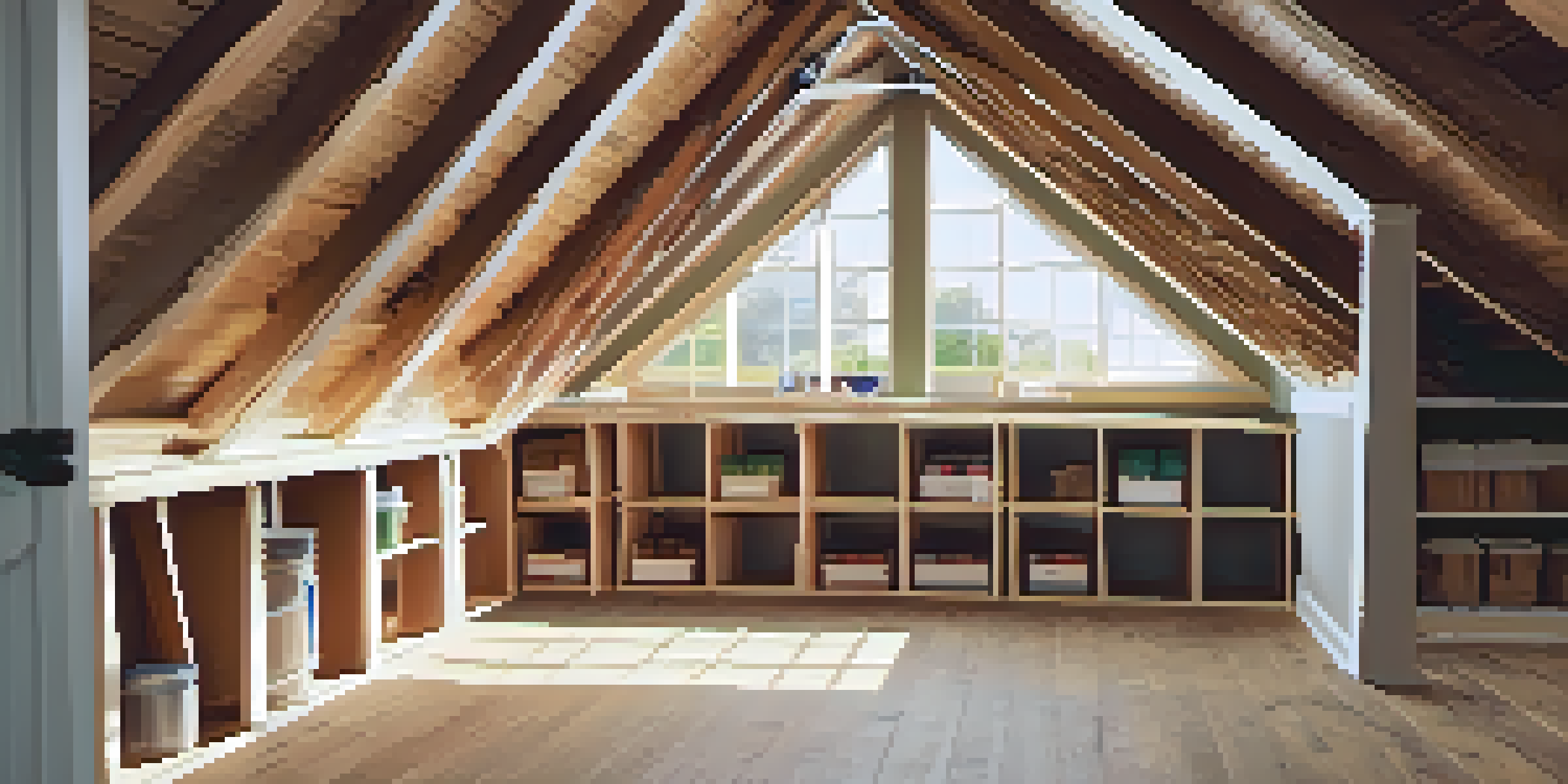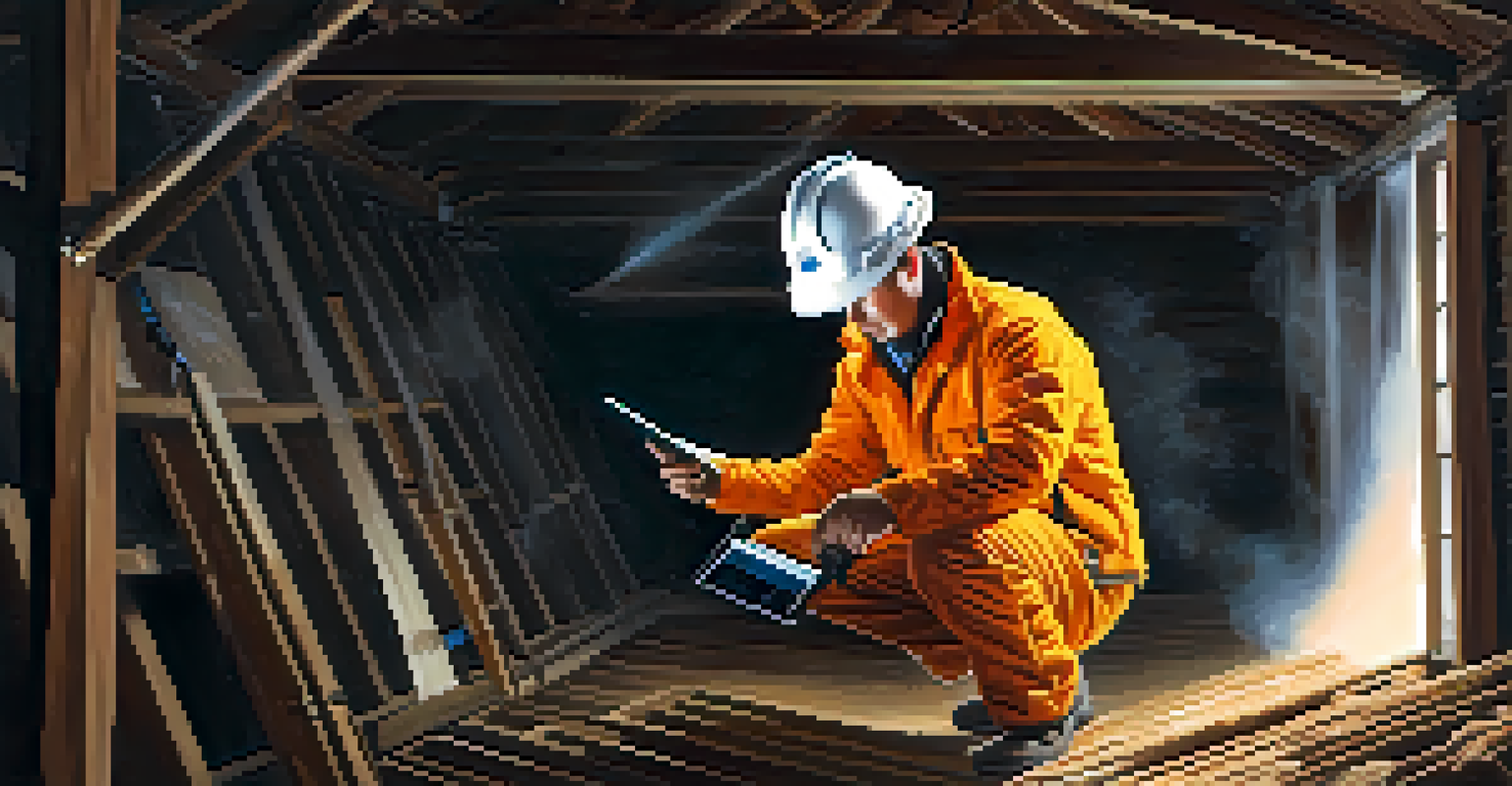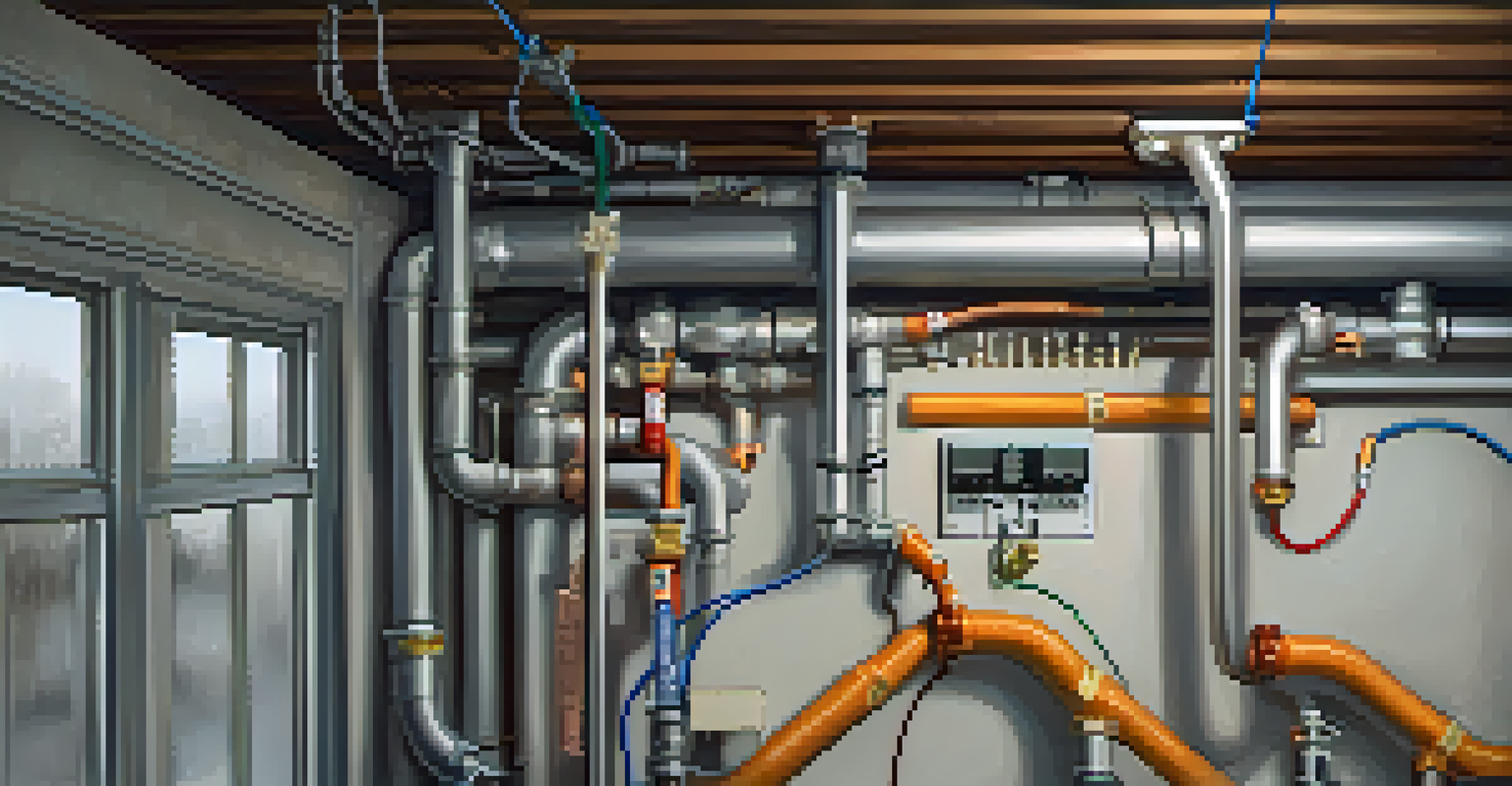How to Prepare Your Attic for a Home Inspection

Understanding the Importance of Attic Preparation
Preparing your attic for a home inspection is crucial. Think of it as setting the stage for a performance; you want everything to look its best. A well-prepared attic can significantly influence the inspector's perception of the entire home.
The best way to predict the future is to create it.
An organized and clean attic not only reflects well on you as a homeowner but can also highlight the property’s positive features. It’s an opportunity to show off insulation quality, structural integrity, and any upgrades you've made over the years.
Moreover, a smooth home inspection can lead to a faster sale or a more favorable offer. By taking the time to prepare your attic, you're investing in your home's value and appeal.
Cleaning Out Clutter and Debris
The first step in preparing your attic is to clear out any clutter. Imagine trying to find your favorite sweater in a messy room; it’s frustrating! By organizing your attic, you make it easier for the inspector to assess the space without distractions.

Start by removing items that don’t belong in the attic, such as old furniture or boxes of items you’ve long forgotten. This not only creates a more open environment but also reduces the risk of pests or mold, which can be red flags during inspections.
Prepare Your Attic for Inspections
A well-prepared attic enhances the inspector's perception of your home, potentially leading to a quicker sale.
Once the unnecessary items are gone, sweep and dust the area. A clean attic sends a message that you take pride in your home and have maintained it well over the years.
Checking for Signs of Damage or Pests
Next, it's vital to inspect your attic for any signs of damage or pest infestations. Think of this step as a health check-up for your home; you need to know what’s wrong before you can fix it. Look for water stains, mold, or droppings that might indicate a problem.
Success is where preparation and opportunity meet.
If you discover any issues, address them before the inspection. For example, if you see a leak, it’s better to fix it than to risk a negative impression during the inspection. Remember, the inspector will likely look for these signs, so it’s best to be proactive.
Additionally, consider hiring a pest control professional if you suspect any unwanted critters. A pest-free attic not only satisfies the inspector but also gives you peace of mind.
Ensuring Proper Ventilation and Insulation
Proper ventilation and insulation are crucial for a healthy attic. Think of your attic as the lungs of your home; they need to breathe to function well. Good ventilation prevents moisture buildup, which can lead to mold, while proper insulation helps maintain energy efficiency.
Check the vents to ensure they aren’t blocked by insulation or debris. If air can’t circulate, it can create a host of problems, including increased energy bills and potential structural damage.
Clear Clutter and Ensure Safety
Removing unnecessary items and ensuring a safe environment helps the inspector assess the attic without distractions.
If you find that your insulation is inadequate, consider adding more to improve performance. A well-insulated attic can save you money in the long run and impress the inspector with its efficiency.
Securing Electrical and Plumbing Systems
Next, take a close look at the electrical and plumbing systems in your attic. Just like a chef wouldn’t want a messy kitchen, you don’t want exposed wires or leaky pipes in your attic. Properly secured systems not only look better but also function safely.
Ensure that all electrical wiring is up to code, without frayed or exposed wires. If you notice anything questionable, it may be worth calling in a professional electrician to ensure everything meets safety standards.
Similarly, check for any plumbing leaks or issues. Addressing these problems ahead of time can prevent them from becoming major concerns during the inspection.
Documenting Your Attic’s Features and Upgrades
As you prepare your attic, consider documenting its features and any upgrades you've made. This is your opportunity to showcase the unique aspects of your home. A simple list or a few photos can provide context for the inspector and highlight the work you’ve invested.
For example, if you've installed new insulation or a ventilation system, make a note of it. This not only shows your commitment to maintaining the attic but can also be a selling point for potential buyers.
Document Upgrades and Features
Documenting your attic's features and upgrades can highlight its value and reassure inspectors about its condition.
Having documentation ready can facilitate conversations with the inspector and provide reassurance about the condition of your attic.
Creating a Safe Environment for the Inspector
Safety should be a top priority when preparing your attic for an inspection. Picture inviting someone into your home; you want to ensure they feel comfortable and secure. Clear pathways and remove any hazards, such as loose boards or tools left behind.
Consider using a sturdy ladder that provides easy access to the attic. If the inspector struggles to get in or feels unsafe, it can affect their assessment and the overall inspection experience.

By creating a safe environment, you’re not only helping the inspector do their job, but you’re also demonstrating that you care about the integrity of your home.
Final Touches Before the Home Inspection
As the inspection day approaches, take a moment to add those final touches. Just like a final polish on a car before a sale, these little details can make a difference. Double-check that everything is in order and that you’ve addressed any previous concerns.
Consider adding an air freshener or ensuring the attic is well-lit. A pleasant atmosphere can leave a lasting impression on the inspector and help highlight all your hard work.
Finally, take a deep breath and be confident. You’ve prepared thoroughly, and your attic is now ready to shine during the inspection!